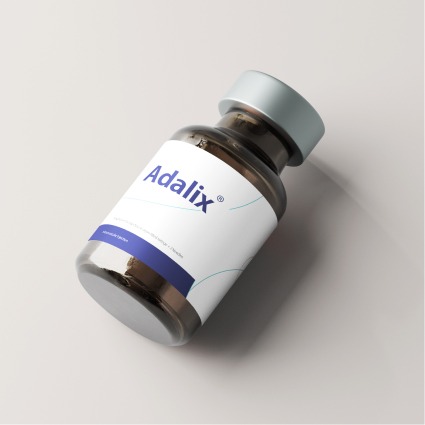Rituximab has been a cornerstone therapy in the treatment of lymphoproliferative disorders since its introduction in 1997. Its ability to target the CD20 antigen and selectively deplete B-cells revolutionized the management of diseases such as non-Hodgkin lymphoma (NHL) and chronic lymphocytic leukemia (CLL). Over the past decade, second-generation anti-CD20 monoclonal antibodies like obinutuzumab have emerged, aiming to enhance therapeutic outcomes. This article examines the comparative efficacy of rituximab versus second-generation CD20 antibodies, with a focus on overall survival (OS), progression-free survival (PFS), and adverse event (AE) profiles.
How Rituximab Revolutionized CD20 Therapy
How Rituximab Revolutionized CD20 Therapy
Rituximab was the first monoclonal antibody developed to target the CD20 antigen on B-cells, transforming the treatment landscape for lymphoproliferative disorders. By binding specifically to CD20, rituximab induces B-cell depletion through three distinct mechanisms: antibody-dependent cellular cytotoxicity (ADCC), complement-dependent cytotoxicity (CDC), and direct apoptosis. This multifaceted approach has made rituximab uniquely effective at eradicating malignant B-cells while sparing stem cells, allowing normal immune function to recover post-treatment.
Rituximab’s precision targeting of CD20, a protein expressed only on mature B-cells, minimizes off-target effects and long-term complications, setting a benchmark for therapeutic safety and efficacy. Its introduction in the late 1990s led to significant improvements in survival outcomes for diseases like non-Hodgkin lymphoma (NHL) and chronic lymphocytic leukemia (CLL). As clinical trials consistently demonstrated durable remission rates, rituximab quickly became the gold standard for CD20-targeted therapy, reshaping oncology practice and paving the way for future monoclonal antibody innovations.
The Mechanisms Underpinning Rituximab’s Success
Rituximab functions by targeting the CD20 antigen expressed on the surface of mature B cells. Its mechanisms of action include antibody-dependent cellular cytotoxicity (ADCC), complement-dependent cytotoxicity (CDC), and direct apoptosis induction. These mechanisms effectively eliminate malignant B cells while sparing stem cells, allowing normal B-cell recovery post-treatment. This unique mechanism has positioned rituximab as a gold standard therapy in lymphoproliferative disorders.
Long-Term Survival Outcomes with Rituximab
Numerous studies have established rituximab’s long-term efficacy. The PRIMA study, for instance, demonstrated a 10-year OS rate of 80% in follicular lymphoma patients receiving rituximab maintenance therapy (Salles et al., 2020). Such findings underscore rituximab’s unparalleled ability to provide durable survival benefits, setting a high benchmark for subsequent therapies.
How Second-Generation CD20 Antibodies Compare
Second-generation CD20 monoclonal antibodies, such as obinutuzumab, were developed to build on the success of rituximab by enhancing antibody-dependent cellular cytotoxicity (ADCC) and overcoming resistance to complement-dependent cytotoxicity (CDC). These advancements were achieved through glycoengineering of the antibody’s Fc region, improving its ability to bind immune effector cells like natural killer (NK) cells.
Clinically, second-generation antibodies have shown modest improvements in progression-free survival (PFS). For example, obinutuzumab extended median PFS by approximately four months compared to rituximab in several lymphoproliferative disorders. However, no significant differences in overall survival (OS) have been observed, with both treatments delivering comparable long-term outcomes.
Despite the theoretical benefits, second-generation antibodies are associated with a higher incidence of adverse events, including severe infusion-related reactions and infections. This increased toxicity has limited their appeal, particularly in elderly or comorbid patients. While these agents may provide incremental benefits in specific settings, they have not supplanted rituximab as the preferred first-line therapy in most cases, due to the lack of OS improvement and the challenges posed by their safety profiles.
Progression-Free Survival (PFS): Modest Gains with Obinutuzumab
Second-generation antibodies like obinutuzumab aim to improve upon rituximab by enhancing ADCC and reducing CDC resistance. Data from randomized controlled trials reveal that obinutuzumab slightly improves PFS compared to rituximab. In follicular lymphoma, obinutuzumab extended median PFS by approximately four months (40 months vs. 36 months). However, while statistically significant (HR: 0.88; 95% CI: 0.81–0.95; p=0.002), this marginal gain raises questions about its clinical relevance.
Overall Survival (OS): No Significant Advantage
When examining OS, the ultimate endpoint for many oncologic therapies, there is no significant difference between rituximab and obinutuzumab. Patients treated with rituximab had a median OS of 82 months compared to 84 months for obinutuzumab (HR: 1.03; 95% CI: 0.96–1.11; p=0.45). This equivalence in OS suggests that the glycoengineering of second-generation antibodies has not translated into meaningful survival benefits.
Safety Profile: Rituximab’s Advantage in Tolerability
Rituximab consistently demonstrates a superior safety profile compared to second-generation CD20 antibodies like obinutuzumab. Clinical data reveal significantly lower rates of severe adverse events, including infusion-related reactions (8% vs. 15%) and serious infections (10% vs. 16%). These differences are particularly crucial for elderly or comorbid patients, who are more vulnerable to treatment-related toxicities.
The tolerability of rituximab allows for fewer treatment interruptions, ensuring patients can complete their prescribed regimens without compromising efficacy. This advantage not only enhances the overall treatment experience but also reinforces rituximab’s role as a more manageable and patient-friendly therapy in the treatment of lymphoproliferative disorders.
Infusion-Related Reactions and Infections
Adverse events remain a critical consideration in treatment selection. Rituximab is associated with a significantly lower rate of infusion-related reactions (8%) than obinutuzumab (15%). Severe infections were also less common with rituximab (10% vs. 16%). These differences are particularly important in elderly patients or those with comorbidities, who may struggle with the increased toxicity of second-generation antibodies.
Real-World Impact on Treatment Continuity
The superior safety profile of rituximab translates into fewer treatment interruptions, ensuring patients can complete their prescribed regimens. This consistency is essential for achieving optimal therapeutic outcomes.
Real-World Evidence Supporting Rituximab’s Use
Real-world studies strongly reinforce rituximab’s efficacy and tolerability across diverse patient populations. In a large registry study involving 10,000 patients with non-Hodgkin lymphoma (NHL), rituximab-based therapy achieved a five-year overall survival (OS) rate of 70% and a progression-free survival (PFS) rate of 58%. These outcomes align closely with clinical trial findings, highlighting rituximab’s consistent performance in both controlled and real-world settings.
Beyond efficacy, rituximab’s affordability further solidifies its role as the preferred option, especially with the introduction of biosimilars that have reduced its cost by 20–30%. This combination of proven effectiveness and cost-efficiency makes rituximab a logical and accessible choice for clinicians and patients worldwide, particularly in resource-limited healthcare systems.
Large-Scale Studies Demonstrate Rituximab’s Efficacy
Real-world data reinforce rituximab’s role as a reliable and effective therapy. A registry study involving 10,000 NHL patients treated with rituximab-based regimens reported a 5-year OS rate of 70% and a 5-year PFS rate of 58%. These outcomes align with clinical trial findings, emphasizing rituximab’s efficacy across diverse populations.
Cost-Effectiveness and Accessibility
Economic factors further favor rituximab, especially with the availability of biosimilars that have reduced its cost by 20–30%. In contrast, obinutuzumab remains significantly more expensive, with limited evidence to justify the additional financial burden. For resource-limited settings, rituximab’s affordability and proven effectiveness make it the logical choice.
Conclusion: Why Rituximab Remains the Gold Standard
This analysis demonstrates that while second-generation anti-CD20 antibodies like obinutuzumab offer modest PFS benefits, they fail to surpass rituximab in terms of OS and safety. Rituximab’s well-established efficacy, superior tolerability, and cost-effectiveness solidify its position as the preferred therapy for lymphoproliferative disorders. Clinicians should prioritize rituximab as a first-line treatment, reserving second-generation antibodies for specific cases where additional PFS gains may outweigh their higher toxicity and cost.
Explore expert-driven insights on biosimilar solutions in oncology and immunology by visiting the official website of Opal Bio Pharma (OBP).

